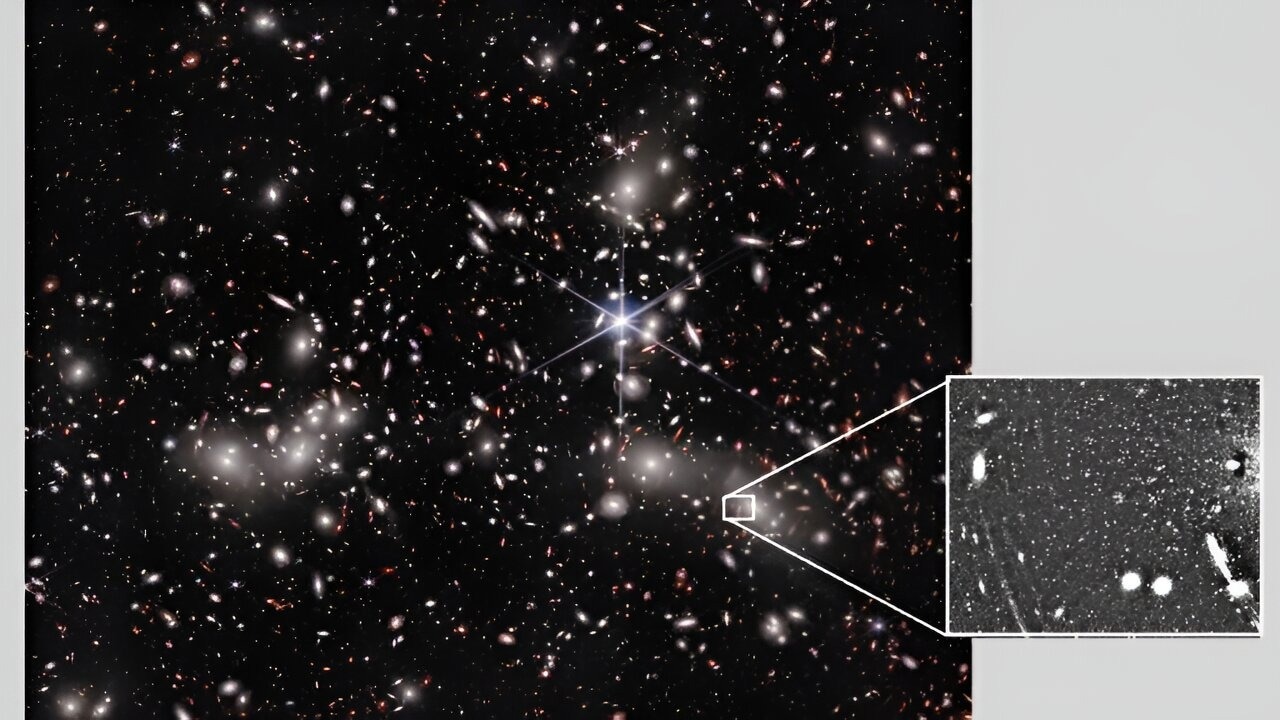Two astronomers from McMaster have studied a distant giant cluster of galaxies 3.5 billion years ago using new deep imaging data from the James Webb Space Telescope.

James Webb Space Telescope image of Abell 2744 (“Pandora’s Cluster”), a giant cluster of galaxies 3.5 billion. Image Credit: McMaster University
William Harris, an Emeritus Professor, and Postdoctoral Fellow Marta Reina-Campos, a Canadian Institute for Theoretical Astrophysics National Fellow, worked together on a study that was published in Monthly Notices of the Royal Astronomical Society.
Thousands of galaxies of various sizes can be found in the galaxy cluster known as Pandora’s Cluster, which is also frequently referred to by its catalog name, Abell 2744.
Reina-Campos and Harris concentrated the research on the globular clusters, which are old, compact star clusters present in those galaxies.
Theorist Reina-Campos creates sophisticated computer simulations of galaxies that allow one to track the globular clusters’ development from the beginning of time to the present.
As an observational astronomer, Harris measures the actual characteristics of globular clusters in massive galaxies such as Abell 2744.
Up until now, we’ve been restricted to measuring the properties of these star clusters just in galaxies in the nearby universe. This is like trying to deduce a person’s history by only working from a present-day photo of them. What about all that came before? The James Webb Space Telescope has opened up a huge new range of space and time for exploration.
William E Harris, Emeritus Professor, Department of Physics & Astronomy, McMaster University
Because Abell 2744 is so far away, the light seen today was produced 3.5 billion years ago, or roughly when life on Earth began.
For the first time, we can see directly what the features of the star clusters were like that long ago. This lets us fill in more of their past story and adds entirely new tests for what we predict from theory. It will also help us understand more about the histories of the galaxies themselves.
Marta Reina-Campos, Postdoctoral Fellow, Department of Physics & Astronomy, McMaster University
The so-called “lookback time” for Abell 2744 is equivalent to viewing the universe 25% of the way back to the Big Bang and its inception.
Reina-Campos and Harris view the work as the first stage in a new direction.
The images that JWST is producing are incredible – we’ve never seen anything like this before. It’s going to be one of the premier instruments in the entire history of science.
William E Harris, Emeritus Professor, Department of Physics & Astronomy, McMaster University
Journal Reference
Harris, E, W., and Reina-Campos, M., (2023). JWST photometry of globular cluster populations in Abell 2744 at z = 0.3. Monthly Notices of the Royal Astronomical Society. doi.org/10.1093/mnras/stad2903
Source: https://www.eng.mcmaster.ca/